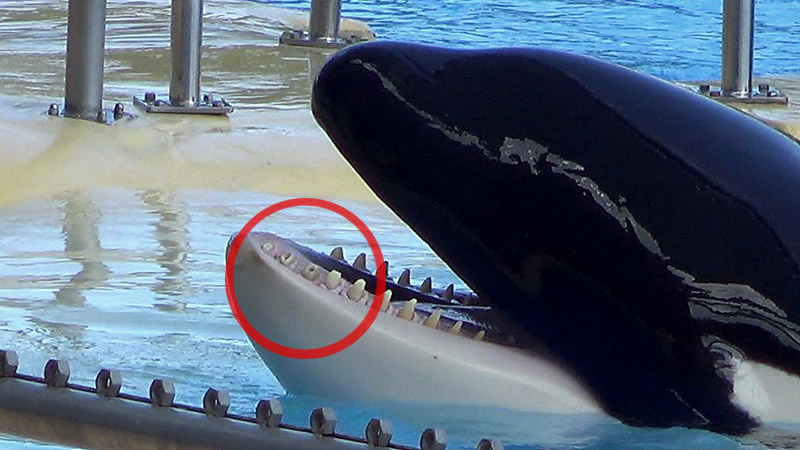
From our human perspective, orcas get off easy. We behold their majesty as graceful creatures of the sea and reinforce their position in the animal kingdom as organisms of great intelligence, seated comfortably atop the food chain, worthy of our respect and awe. Indeed, these attributions are appropriate, but I think we would hold different opinions if we shared the ocean with these “killer whales”. Perhaps if we were a herd of seal, or a pod of dolphin, maybe even a fearsome school of sharks… If someone mentioned an orca in conversation the first thing on our minds would be: “Screw orcas, man. Those guys are jerks.” Allow me to explain.
The Orca (orcinus Orca) is one of the most devious predatory animals I have seen in my time perusing the internet and watching wildlife documentaries. Not only do these creatures conspire with one another to kill their prey, but they also have been known to kill for pleasure, to save the “tastiest” bits of their prey, and to maim and–depending on how you choose to interpret animal behavior–torture those animals unlucky enough to be on the Orca’s Catch of the Day.
Case of interest: Orcas induce tonic immobility in Great White Shark, then proceed to eat its liver.
On May 10th of this year, an article was released detailing 3 great white shark bodies found by a group of marine biologists on the southern coast of Gannsbai, a fishing town in South Africa. Despite having bled out, the shark bodies were fresh, indicating that the kill had happened in the past few days. Upon further analysis, two of the shark bodies each had an identical gash beneath their pectoral fins. The gashes were most likely to have been inflicted by orcas via of their 4-in long incisor teeth. Nothing strange so far. Orcas are known to hunt sharks. In fact, orcas had previously been spotted immobilizing their shark prey via “tonic immobility.” Flip a white shark upside down for around 15 mins and the shark essentially faints and floats in place. Since sharks must constantly swim in order to pass water over their gills, if held in this position for long enough, the shark would simply drown. But back to the identical gashes mentioned above…
At the location of the gash lies the shark’s liver, which is quite buoyant underwater and is previously known to be a food of choice in other types of orca prey due to its energy-rich nutrients. Connecting the dots, ecologist Michelle Jewell believes that pod of orcas first target the sharks, and in coordination, proceed to spin them upside down inducing tonic immobility. Once upside down, an orca with astounding precision, cuts a gash beneath the pectoral fin, and lets the ocean do the rest… The buoyant liver floats out and into the water to be eaten and the orcas are happy and satisfied.
It should be noted that while orcas are known to both prefer shark livers and also immobilize their shark targets, the two behaviors together have not been observed in the wild. However, all three of the shark bodies found that day were missing their livers. Furthermore, all three of these sharks were not just your typical shark swimming and munching small-fry fish. These were great white sharks, sometimes referred to as the “white death” depending on your coastal circle of friends.
Look, all I’m saying is, next time you’re at the beach maybe there are some bigger fears to worry about than a shark in the water.
Here (Source: https://www.earthtouchnews.com/natural-world/predator-vs-prey/crafty-orcas-take-down-white-sharks-and-float-their-livers-like-tasty-buoys/) is the full article for those interested.